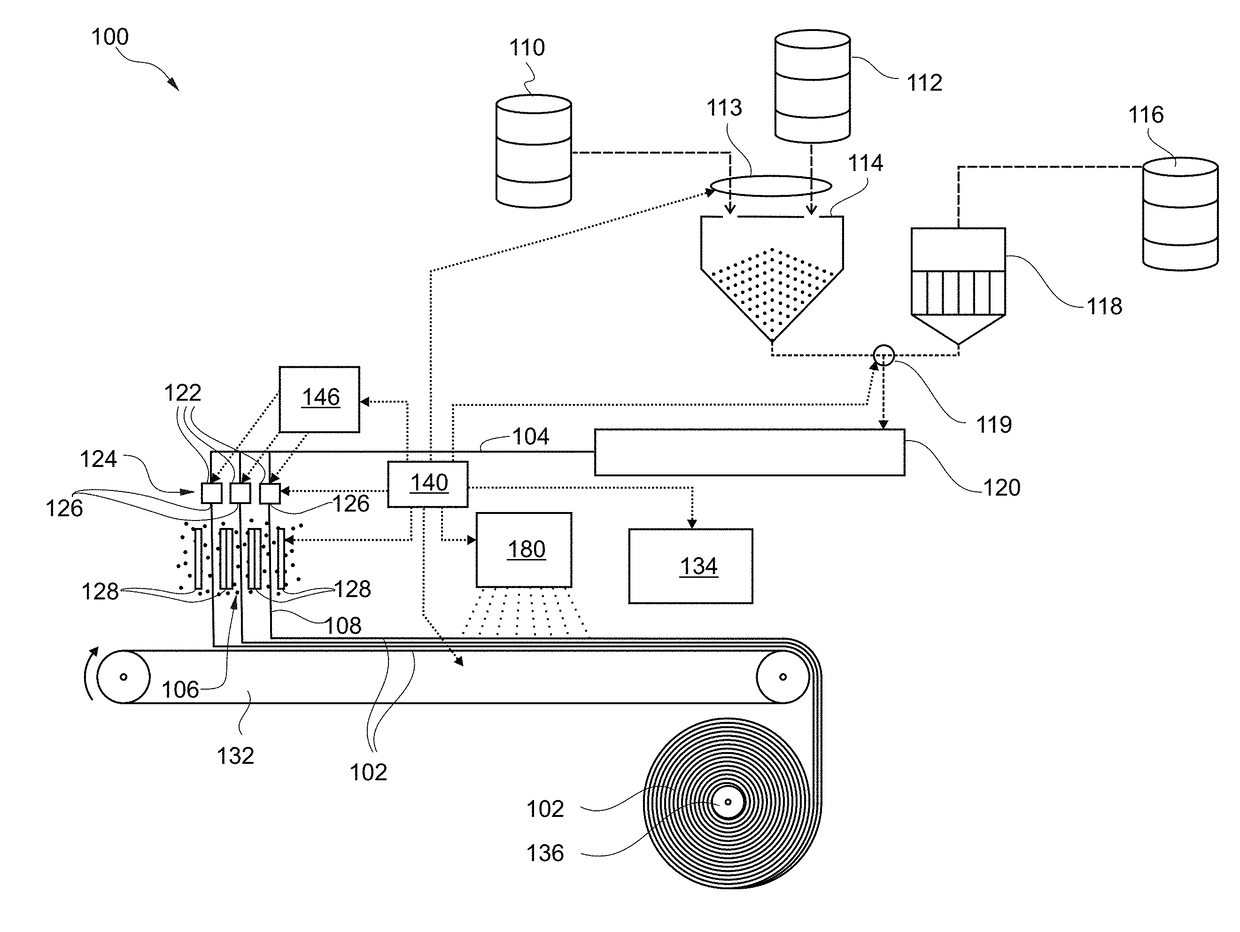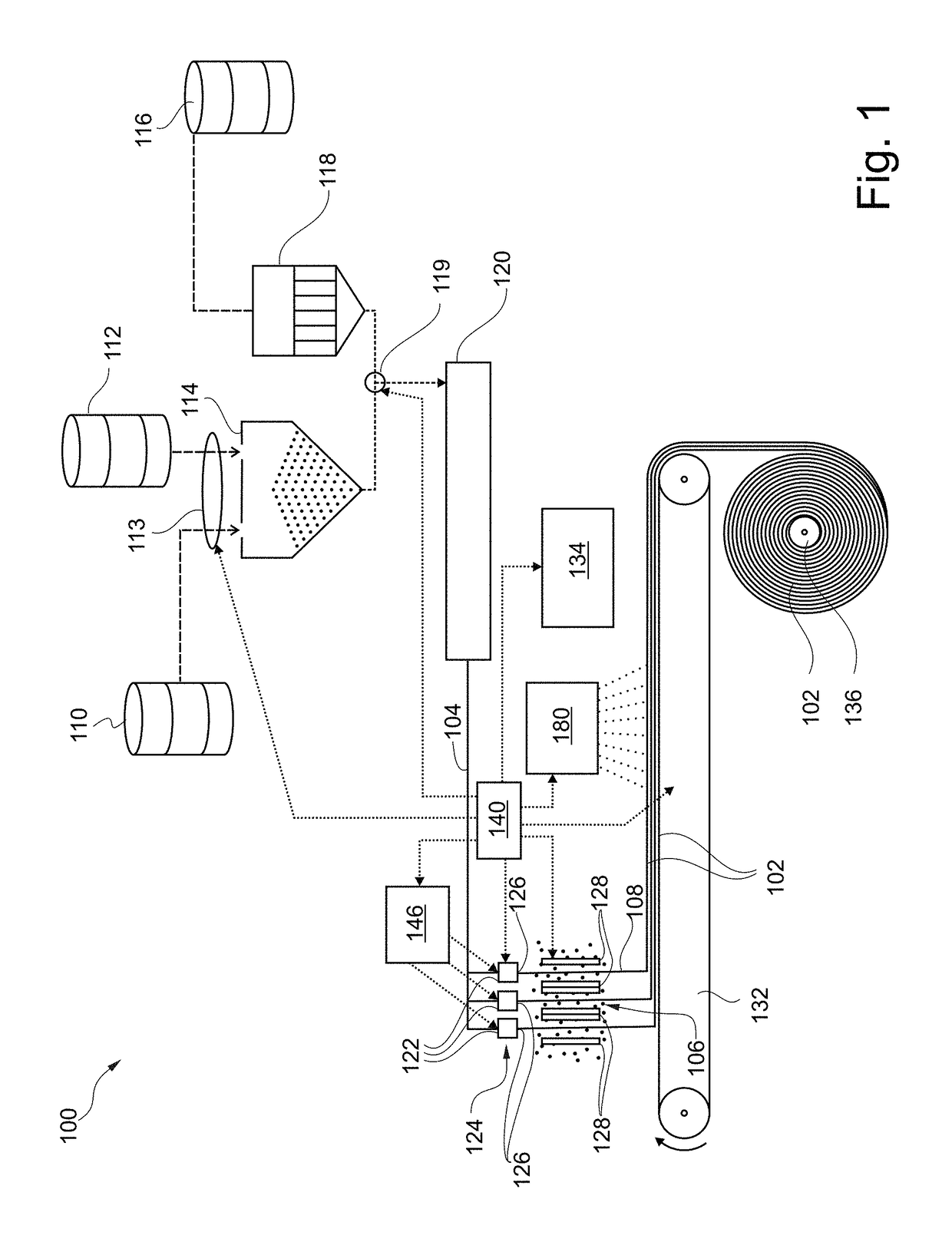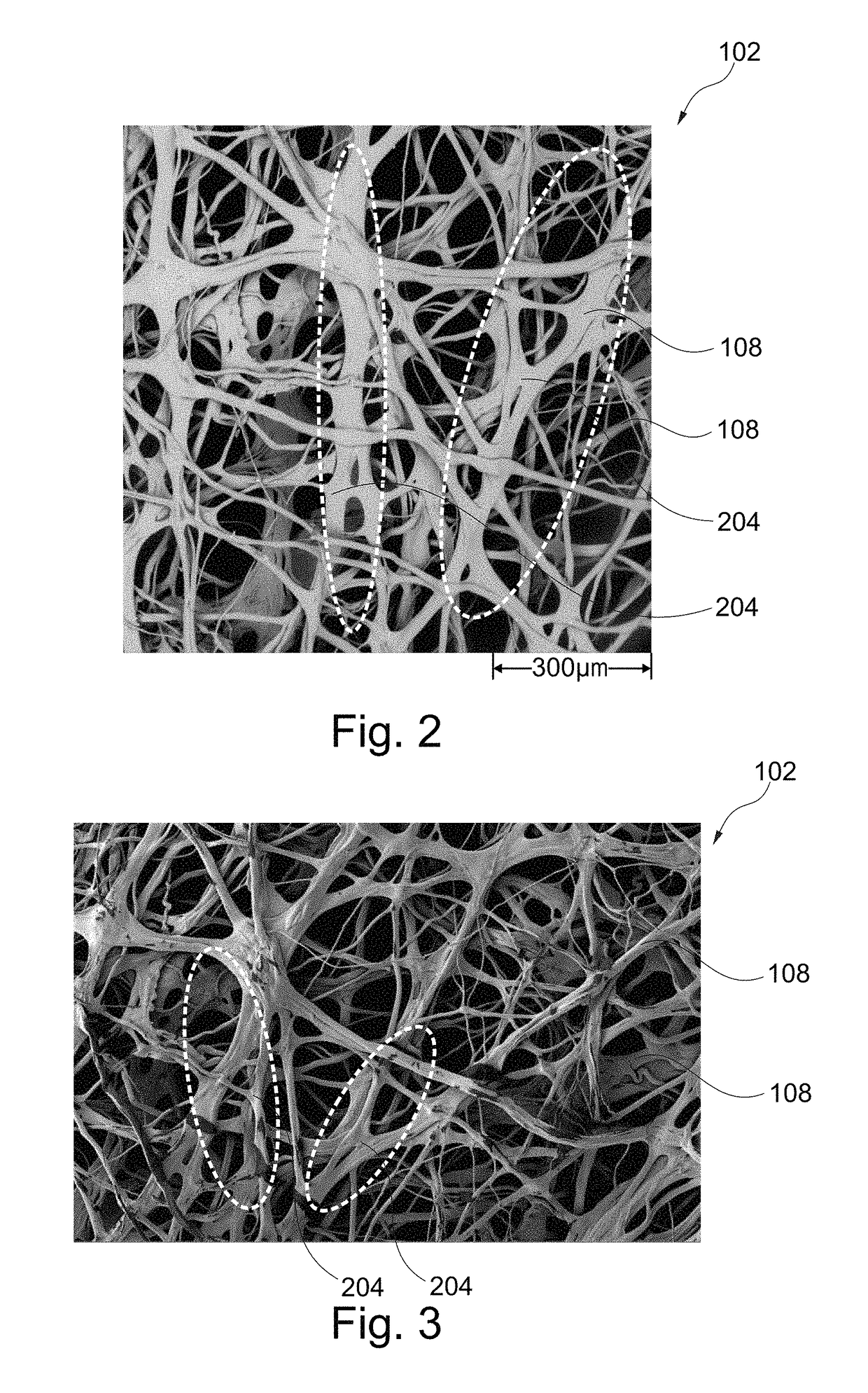Nonwoven cellulose fiber fabric with fiber diameter distribution
a cellulose fiber fabric and fiber diameter technology, applied in the direction of stretch-spinning methods, textiles and papermaking, layered products, etc., can solve the problems of not being able to directly adapt synthetic polymer technology to lyocell, unable to access the properties and performance of current cellulose web products, etc., to achieve high mechanically robust or rigid fabric and high rigidity
- Summary
- Abstract
- Description
- Claims
- Application Information
AI Technical Summary
Benefits of technology
Problems solved by technology
Method used
Image
Examples
Embodiment Construction
[0021]In the following, further exemplary embodiments of the nonwoven cellulose fiber fabric, the method of manufacturing a nonwoven cellulose fiber fabric, the device for manufacturing a nonwoven cellulose fiber fabric, the product or composite, and the method of use are described.
[0022]In an embodiment, different sections of the same fiber differ concerning fiber diameter by more than 50% in relation to the smallest diameter. In other words, a ratio between a largest fiber diameter of this fiber and a smallest fiber diameter of this fiber may be more than 1.5. Thus, the inhomogeneity concerning thickness may be an intra fiber thickness variation. In such an embodiment, a respective fiber itself may show a thickness inhomogeneity. Without wishing to be bound to a specific theory, it is presently believed that when such fibers form a network in the fabric, the inhomogeneity of the thickness of a respective fiber increases the friction force which has to be overcome when moving the v...
PUM
| Property | Measurement | Unit |
|---|---|---|
| diameter | aaaaa | aaaaa |
| diameter | aaaaa | aaaaa |
| diameter | aaaaa | aaaaa |
Abstract
Description
Claims
Application Information
 Login to view more
Login to view more - R&D Engineer
- R&D Manager
- IP Professional
- Industry Leading Data Capabilities
- Powerful AI technology
- Patent DNA Extraction
Browse by: Latest US Patents, China's latest patents, Technical Efficacy Thesaurus, Application Domain, Technology Topic.
© 2024 PatSnap. All rights reserved.Legal|Privacy policy|Modern Slavery Act Transparency Statement|Sitemap



